2016 Most Enhanced
Sponsored By: Mangrove Redevelopment, www.stl-style.com and Paul and Amy Mittelstadt, Specialists in the CWE-- CWErealestate.com
 |
 |
 |  |  |
* The text below is a slightly edited version of Andrew Weil's comments at the award ceremony on May 19th.
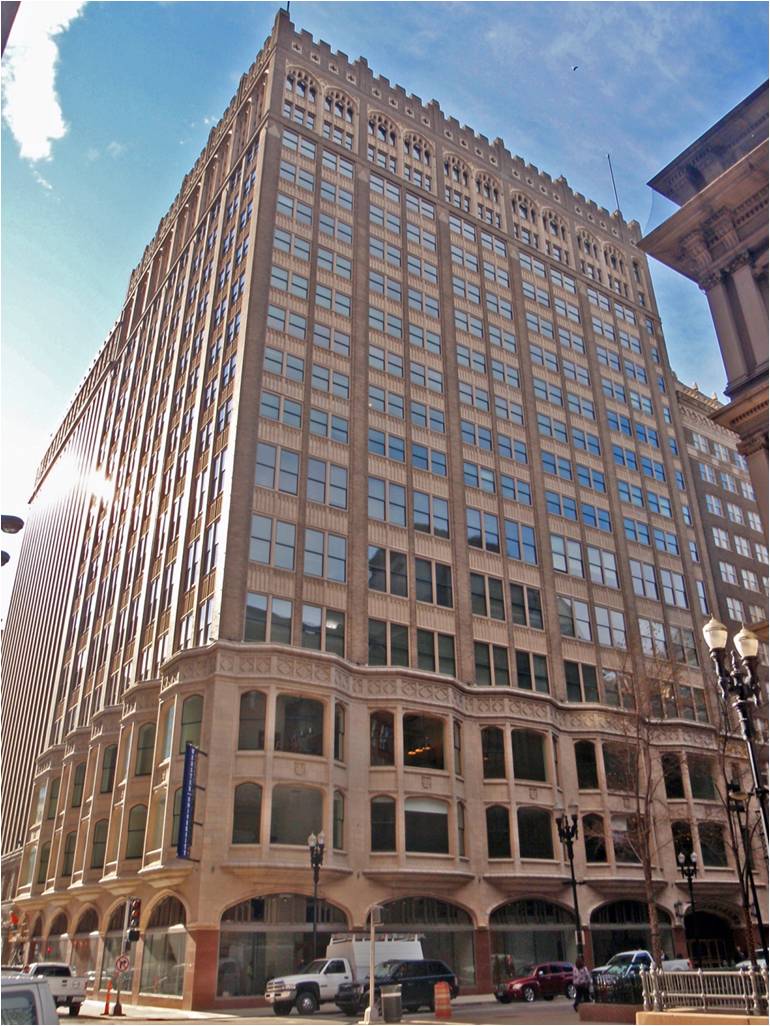 |
The Arcade Building, 800 Olive
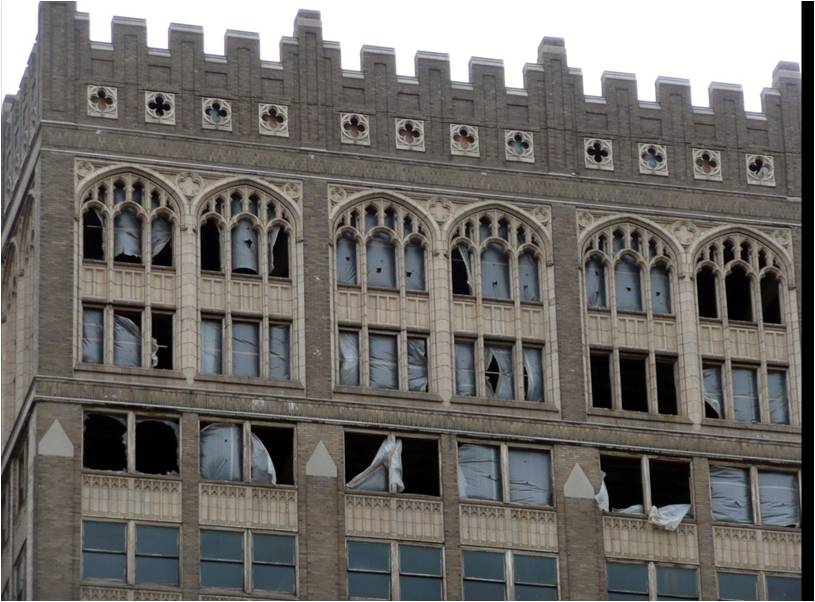 |
Built in two stages in 1906 and 1918, the massive gothic revival Arcade Building was unusual in that it featured six stories of retail space in addition to offices. Marketed as a "city within a city" the jewel in the building's crown was its two-story vaulted arcade stretching straight through from Olive to Pine Street. Once the center of St. Louis' jewelry trade and the longtime headquarters for the PET corporation, the building suffered as retail activity moved away from downtown and PET relocated to its own new building in 1969. By 1978 the Arcade's owners couldn't afford to make repairs to its elevator system resulting in the abandonment of all but the building's first floor. By the early 90s it was completely vacant. Now, following a complete redevelopment by Dominium as a mix of housing as well as space for Webster University, the lights are back on at the Arcade and there are strong indications that the success of this project will soon catalyze the rehabilitation of other important buildings along Olive such as the Chemical, Union Trust and Railway Exchange. Ironically, because the building was such a basket case and, up until now had never been remodeled, its historic interiors were remarkably intact. Great pains were taken to restore features like the faux tile finish in the grand arcade space and three truckloads of newly fabricated terra cotta were commissioned to repair damaged portions of its iconic façade.
Dominium was the developer, the architect was E + A, Paric Construction was the contractor. Accepting the Award is Paul Hohmann from E + A and Tony Cissi of U.S. Bank Community Development Corporation, the primary tax credit investor and financer of the project.
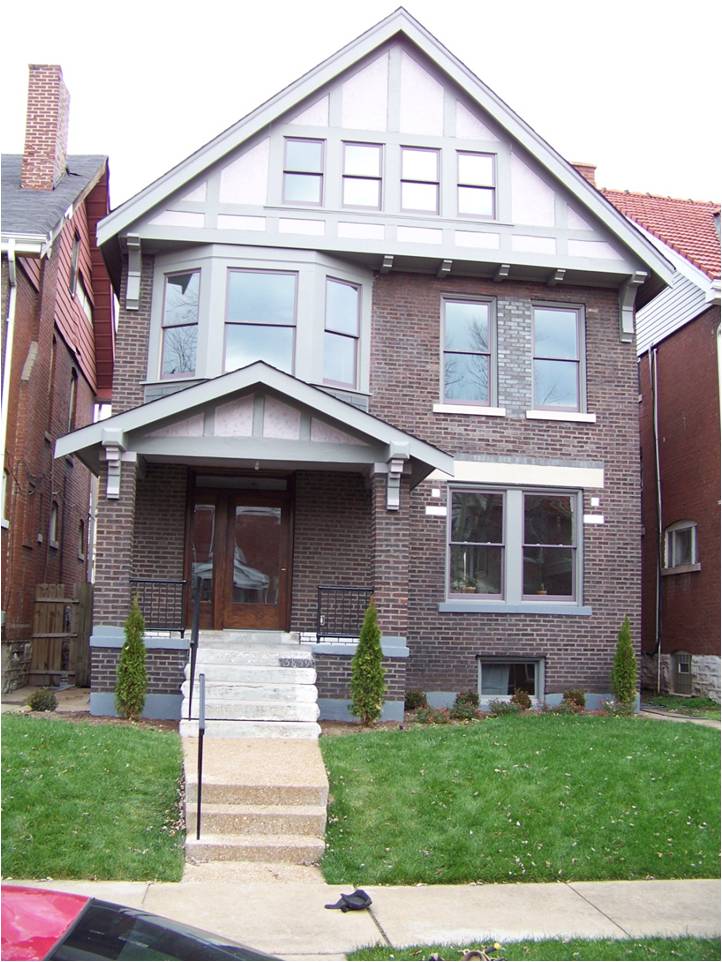 |
5859 DeGiverville
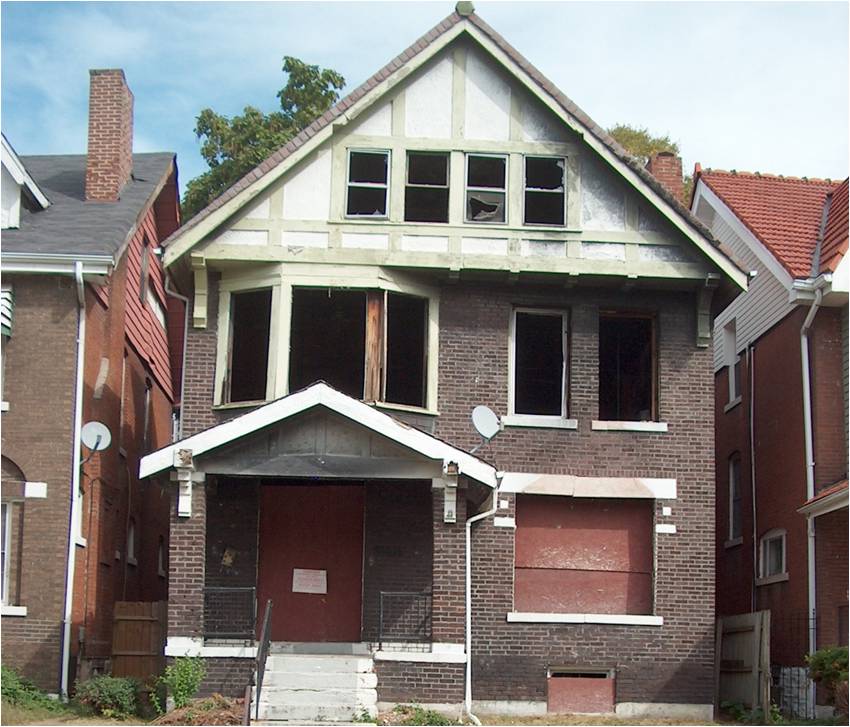 |
After a fire gutted the home at 5859 DeGiverville in the Skinker-Debaliviere neighborhood in 2006, the building sat vacant and open to the elements for more than six years before St. Louis city firefighter and part time rehabber Eric Trudo stepped up to the plate. While Mr. Trudo had worked on components of other rehabs in the past, this building was to be his first complete project. This rehab is a great example of how neighborhood organizations, such as the Skinker DeBaliviere Community Housing Corporation (which had worked for years to find a buyer and also provided construction financing) and a dedicated resident can work together to make a real difference. The building was described by the Times of Skinker DeBaliviere as literally the "biggest eyesore in the neighborhood" and now it is beautifully restored. Of course it didn't happen overnight. After the interior and exterior walls were re-pointed, burned walls and floor joists replaced and the stairs completely rebuilt from the basement to the third floor, the rehab was ready to begin! This home could easily have become a vacant lot without the tenacity, skill and neighborhood pride of Mr. Trudo, Gary Boenke and the Skinker-DeBaliviere Community Housing Corporation, and the St. Louis Design Alliance who served as project architect.
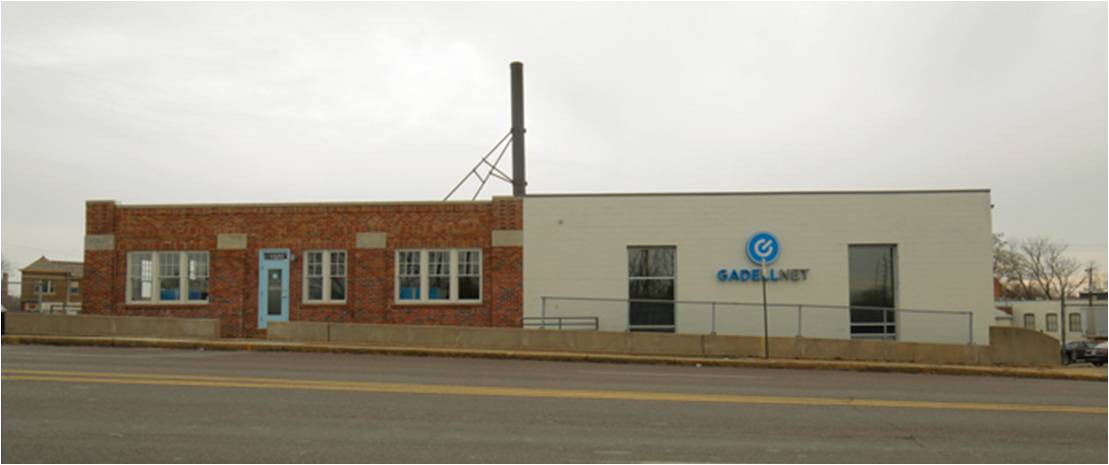 |
Gadellnet Company Headquarters, 1520 S. Vandeventer
Obscured by the Vandeventer viaduct and composed of buildings from the 1930s through the 1980s, the former metal fabrication facility of the Lunar Tool Company is not among St. Louis' most recognizable buildings. But that's beside the point. Cities derive identity from a diversity of building types, strangely placed buildings that tell stories about how the organization of space has changed over time, and the continued use of buildings that have stories to tell about how neighborhoods evolve. Part of the Liggett-Meyers National Register District, these buildings and the surrounding neighborhood are reminders of the area's working-class, industrial roots. Their new use as the headquarters for the I.T. Firm Gadellnet speaks to the neighborhood's changing trajectory in the 21st century. In
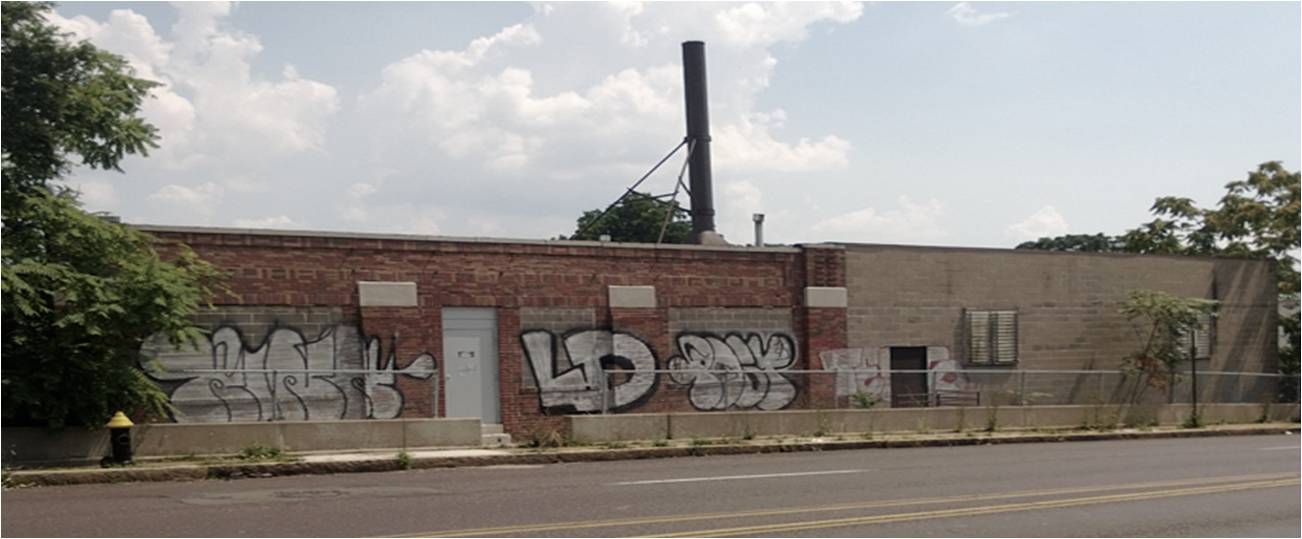 |
transforming the building, the Central Design Office and UIC created an open, collaborative workplace while still maintaining opportunities for focus and privacy. Much of the building's historic character is preserved including the manager's overlook and the massive crane above the reception area, which now helps to support the loft space. The restoration of the barn doors in the lounge allows for a connection to the outside during nice weather and the building blends the old character of the machine shop with the modern aesthetic of a technology company, complete with the requisite ping pong table. Congratulations to UIC, the Central Design Office, UIC Constructors and Gadellnet for seeing opportunity in a building that most others would have missed.
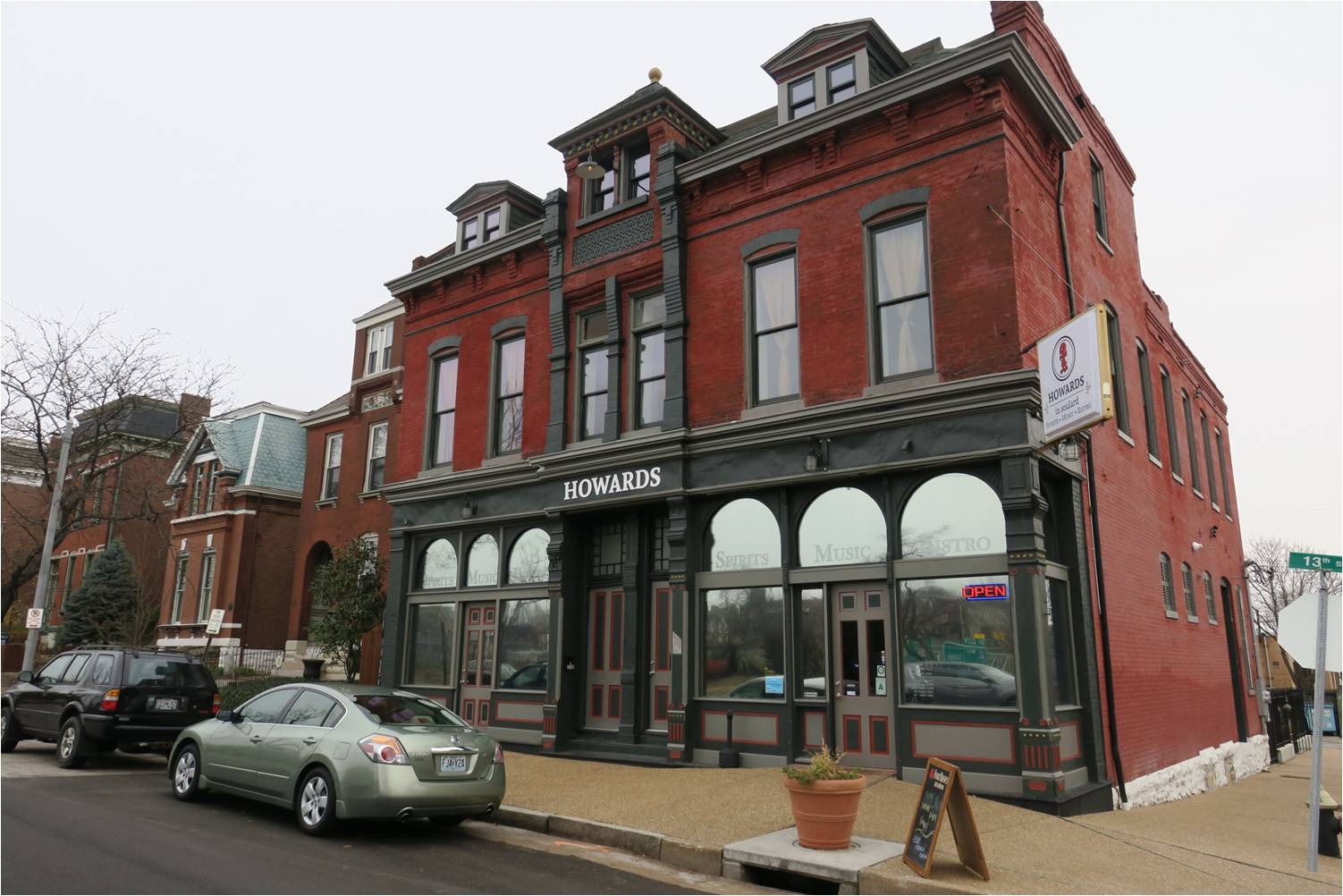 |
Howards in Soulard
This building was known as the HI-Way Bar for many years but for at least the last four years it was known as the highly visible and potentially very beautiful building across from Anheuser Busch where a squatter and his dog lived with no electricity or water. The interior of the building was in horrible condition, full of abandoned furniture, clothing, trash, rotten food, and, well, other things. Jennifer Sims Taylor who submitted the nomination suggested that if we gave an award for most improved odor, this building would have won it as well.
After all of the trash and other "stuff" was cleaned out, the entire building was gutted. The interiors were stripped of their dropped ceilings of moldy acoustical tile, smoke-stained faux wood paneling and water damaged, crumbling plaster.
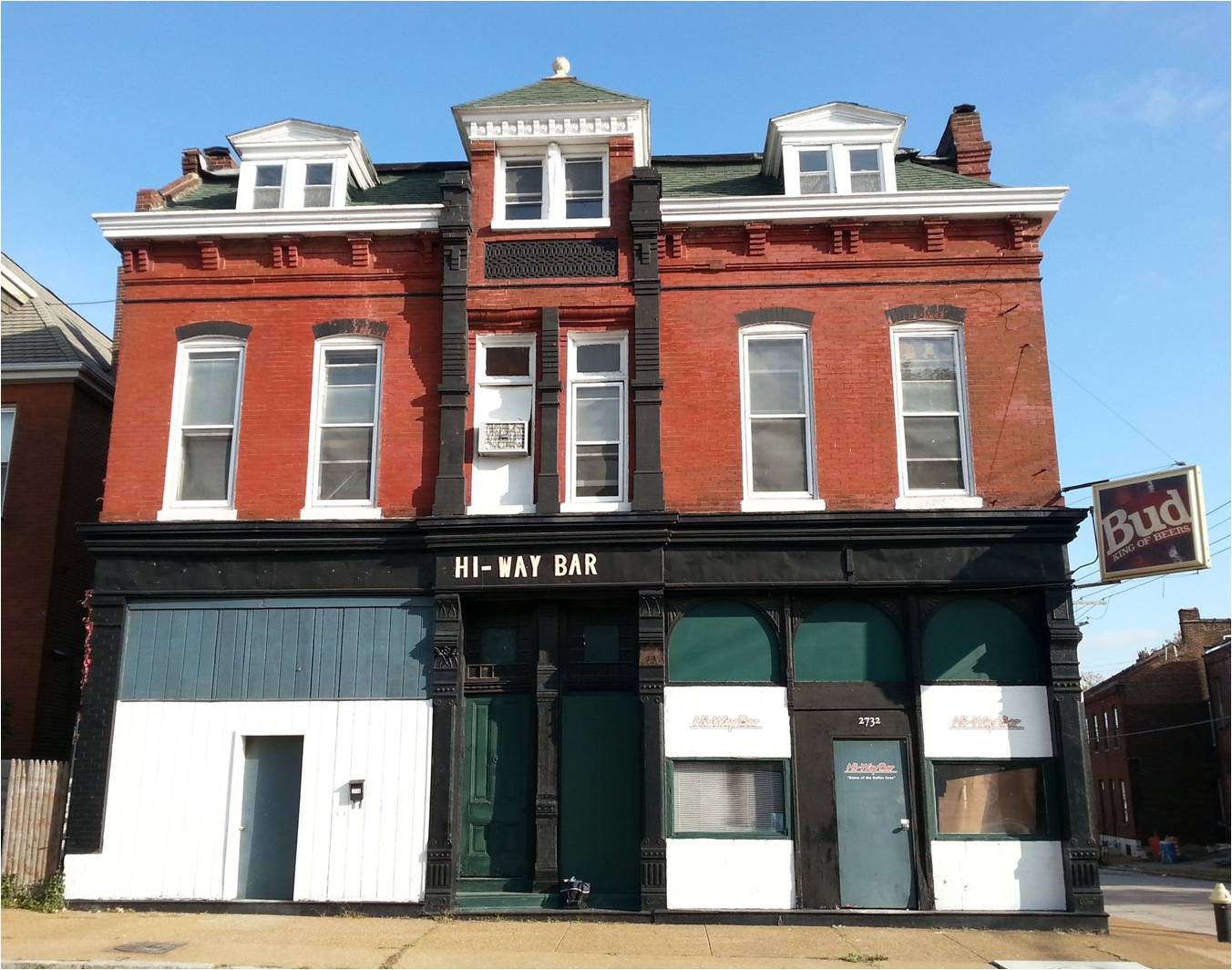 |
During the rehab, new sub flooring and hardwood was installed throughout. A brand new commercial kitchen was installed and a new bar was fabricated from wood salvaged from demo. The second floor was converted into a single apartment with all new finishes. The original front door for the south storefront was found in the basement and reinstalled as a component of a complete storefront restoration. During interior demolition the original doors to the side entry at the rear of the south wall were found enclosed in the wall. These were restored and put back in place and all of the windows throughout were replaced with new historic replica wooden sash.
This rehab restored the dignity, beauty, and smell of this great corner storefront and mitigated a serious problem property for the neighborhood. It also improved how the city looks to travelers passing by on I-55 while creating a lovely new neighborhood gathering place.
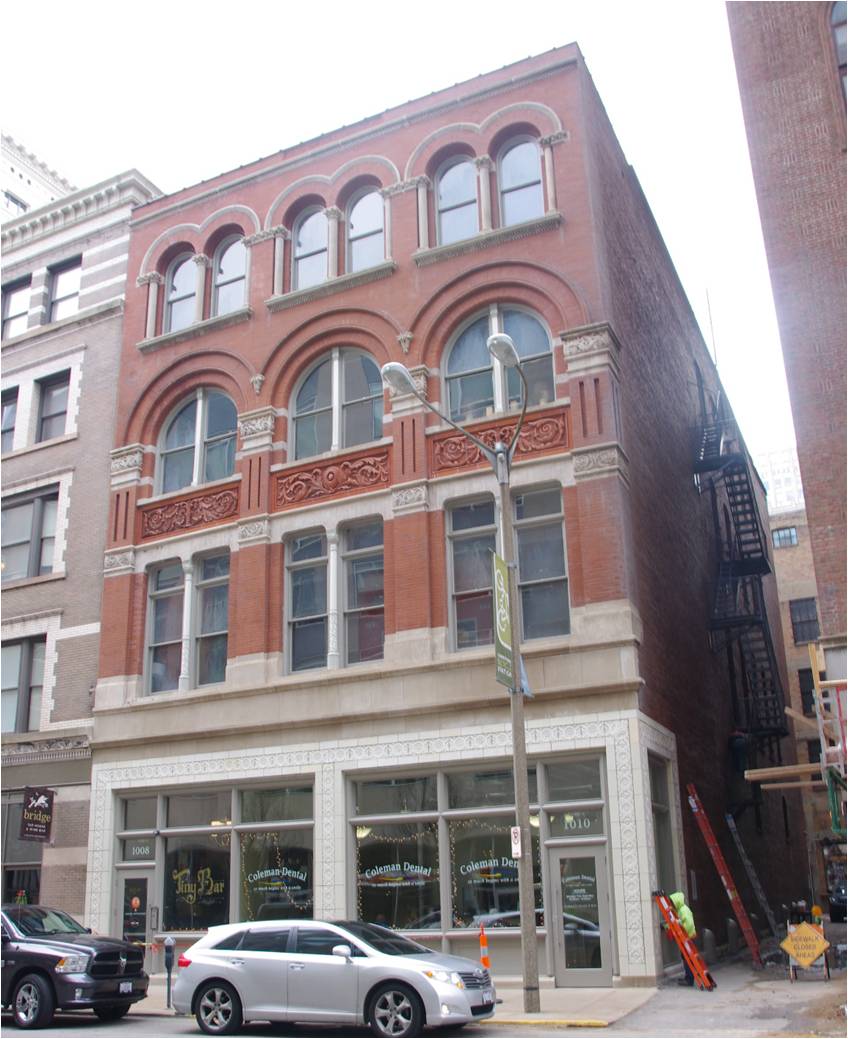 |
1008 Locust
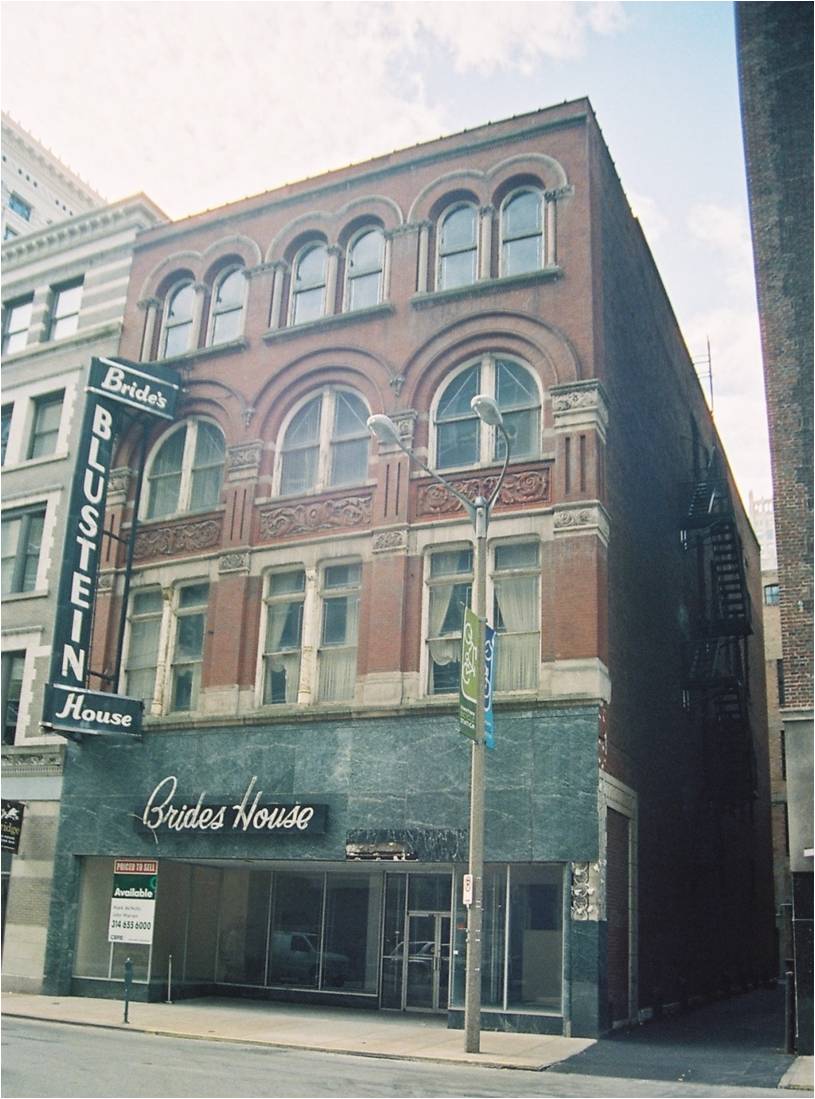 |
Originally built in 1886 for the St. Louis News Company, this building was later associated with Kessler Fur Company and then the Bluestein Bride's House. Vacant by 2007, it was purchased by Dr. Dan Cook who had recently moved his office and medical equipment manufacturing business downtown and was looking for another opportunity to invest in the neighborhood. Dr. Cook wanted to return the building to its original appearance by restoring the terra cotta storefront that had been covered with marble cladding in 1950. This was in part for aesthetic reasons, but also because the marble was badly cracked and chunks were beginning to fall into the street. The terra cotta was still intact on the side of the building in the alley, but the installation of the marble had destroyed it on the primary façade so replacement panels had to be custom fabricated based on surviving examples and a historic image. The historic tiled entry from Kessler Furs was found hidden beneath layers of flooring and carefully restored as were the original pressed tin ceilings throughout. The pigeons were evicted, windows were repaired or replicated, the brick walls were cleaned, pointed and areas damaged during the 20th century storefront modification were re-laid. The building was given all new systems including an upgraded elevator, wiring, mechanical, plumbing, hvac, and each floor provided with an ADA restroom. Today, the building is once again occupied by businesses including what was perhaps the first dentist office to relocate downtown to serve its growing residential population. While the rehabilitation of downtown's enormous office and manufacturing buildings tends to get the most attention, these more modest scale buildings are critically important to restoring street-level vitality because they provide smaller spaces that are accessible to a wide range of uses.
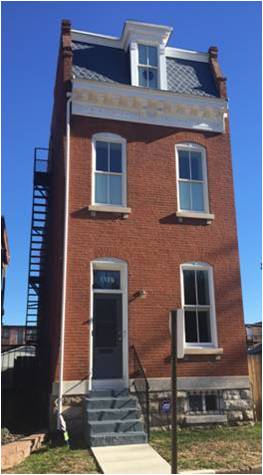 | 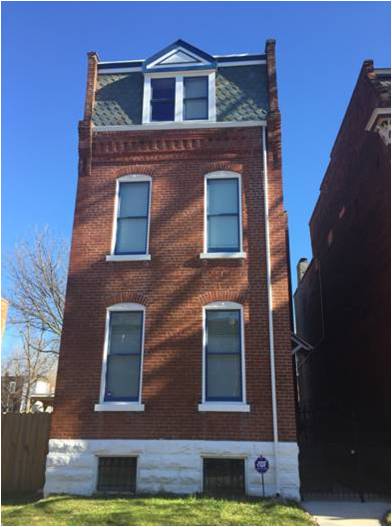 |
3318-24 Wisconsin
After an arsonist set fire to 3320 Wisconsin, which once stood between these houses, the absentee landowner applied for demolition permits for both it and the home at 3318. The application was denied because of the city's preservation ordinances and the will of Alderman Ortmann and the Benton Park Neighborhood Housing Corporation. Of course, if a building becomes a public safety hazard, the preservation ordinance no longer applies so, according to neighborhood informants, somebody went to work surreptitiously destabilizing the burned building even further in the hope of creating a dangerous situation. At the point when the rear wall was gone, the interior burned, and the parapet falling into the street, 3320 had, at least per the building commissioner, reached the point of no return. While we never like to lose a building, the former owner had already demonstrated an interest in demolishing both of his properties, the arsonist was still lurking nearby, and 3318 Wisconsin was languishing in the hands of the LRA. Enter Patty Maher who held her nose and purchased the buildings after the previous owner succeeded in doing enough damage to the center building for the city to approve its removal.
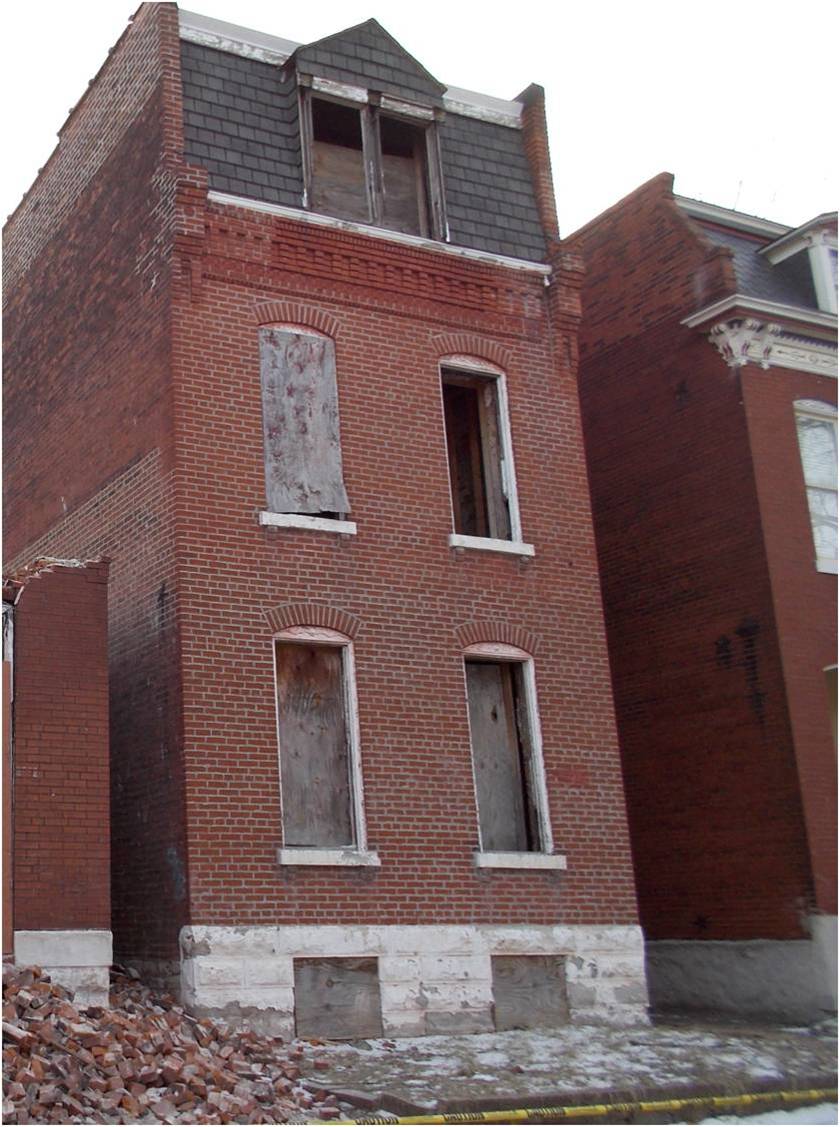 |
In doing so, she took on the challenge of rehabilitating the two shells that were still reasonably intact at either end of the row. Both buildings had been uninhabitable for years. All water and sewer pipes had to be dug out and replaced as did plumbing and electrical throughout. All interior walls were gone and original finishes stolen. Holes in the roofs had allowed water to rot floors and joists and the slope of what remained had sent a cascade over both rear walls for years resulting in the need to take them down completely and relay the brick. The roofs were replaced and new slate was installed on one mansard and restored on the other. Energy Star products were employed throughout and both homes achieved a 50 HERS Efficiency rating. Today, two homes that were variably threatened by arson, illegal destabilization efforts and years of neglect are once again sound and occupied. The Architect for 3318 was Ray Simon and the architect for 3324 was Jessica Deem with Killeen Studios.
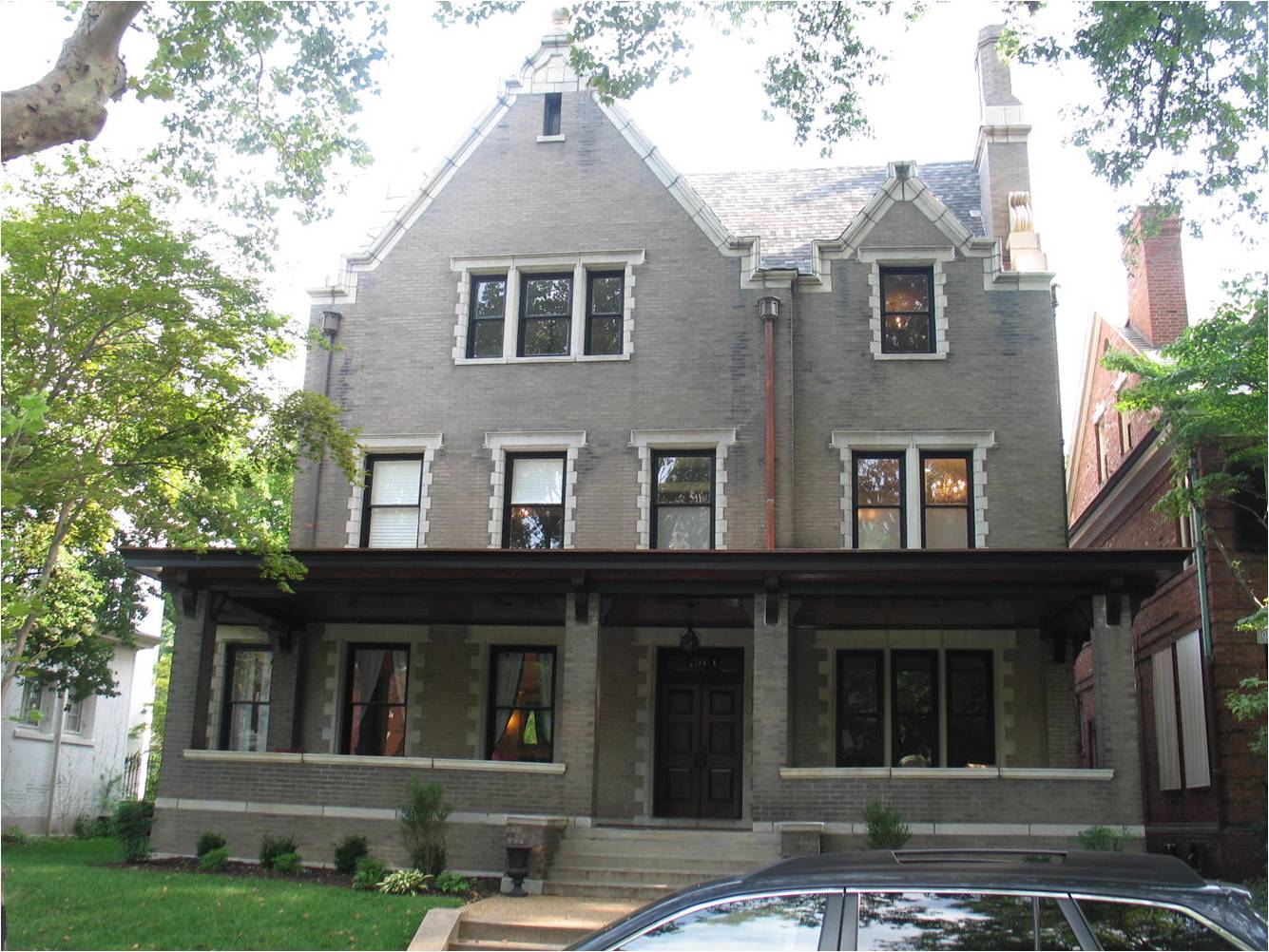 |
4961 Pershing
4961 Pershing was a diamond in the rough; it was one of the few homes on this stately block to be vacant for an extended period of time because its condition was so intimidating. As usual, the twin scourges of water damage and stupid decisions were the source of many of the buildings problems. It had large holes in the bathroom floors, rotten joists in many areas on each floor, the front porch roof connections were completely rotten and pulling away from the house. What little plaster remained was riddled with cracks and mold, and the exterior brick walls were also in poor condition. Finally, there was structural damage in the basement and first floor caused by the removal of load bearing walls by previous owners who were apparently far
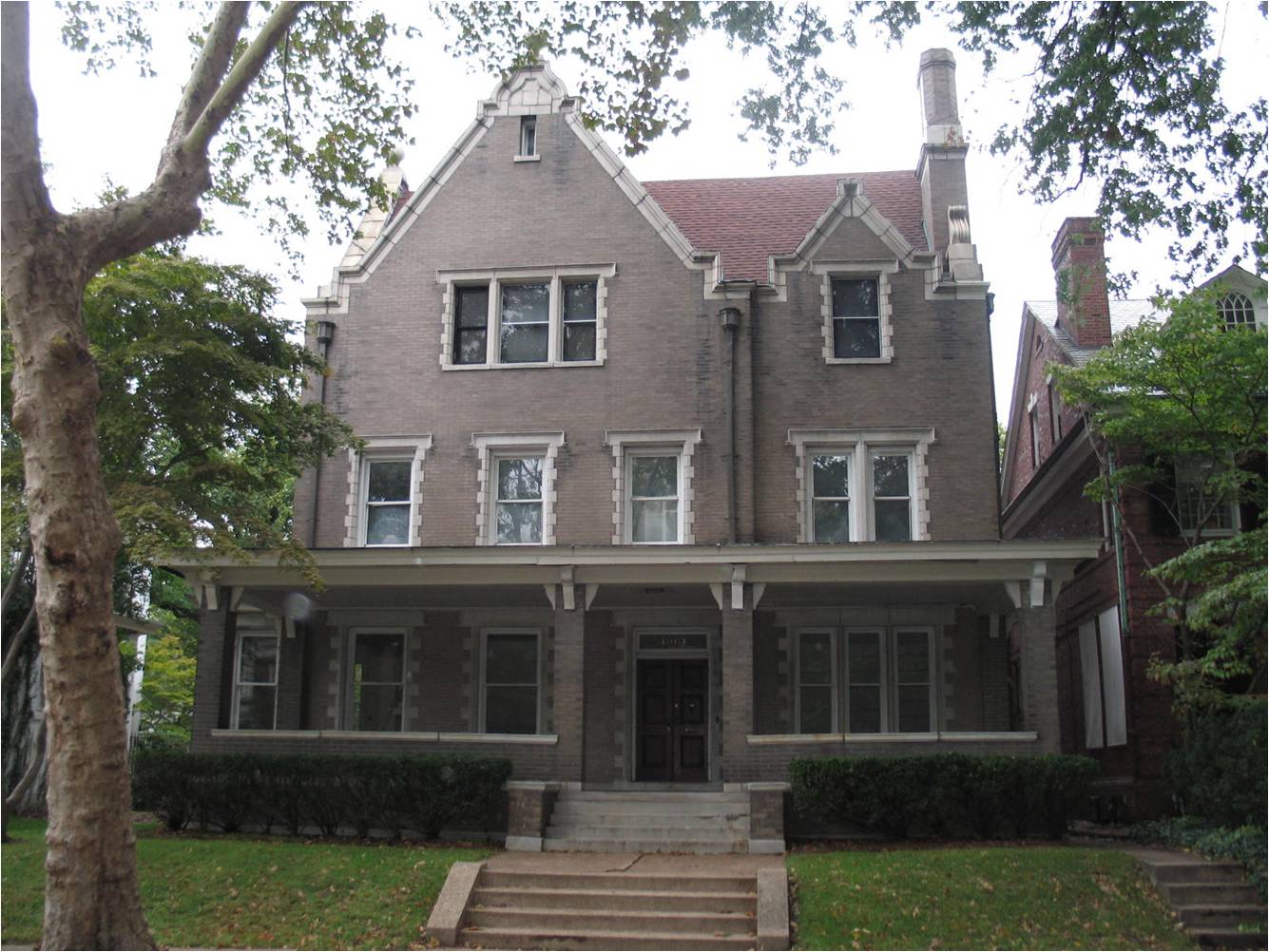 |
more interested in a Darwin Award than a Most Enhanced. During the course of rehabilitation, a new roof was built, new floor joists were installed on all levels as needed, the structural damage in the basement and first floor were corrected with the installation of new steel beams and posts. The damage to the porch roof was fixed and reattached to the front of the house, and the front porch ceiling and floor were refinished. Fortunately, there were a few original details that could be salvaged including about 90% of the original wood trim and hardwood flooring. Also, a majority of the existing doors were in good condition, though they needed to be refinished and rehung. The original butler's pantry cabinetry was repaired and refinished and now serves as the focal point of the spacious kitchen. Most of the existing wood windows were in decent condition and were restored and kept in place. All new electrical, plumbing, and hvac systems were installed and the lights are back on at 4961 Pershing. The architect was Fendler & Associates and the contractor was Trent's Quality Construction.
 |
2829 Magnolia
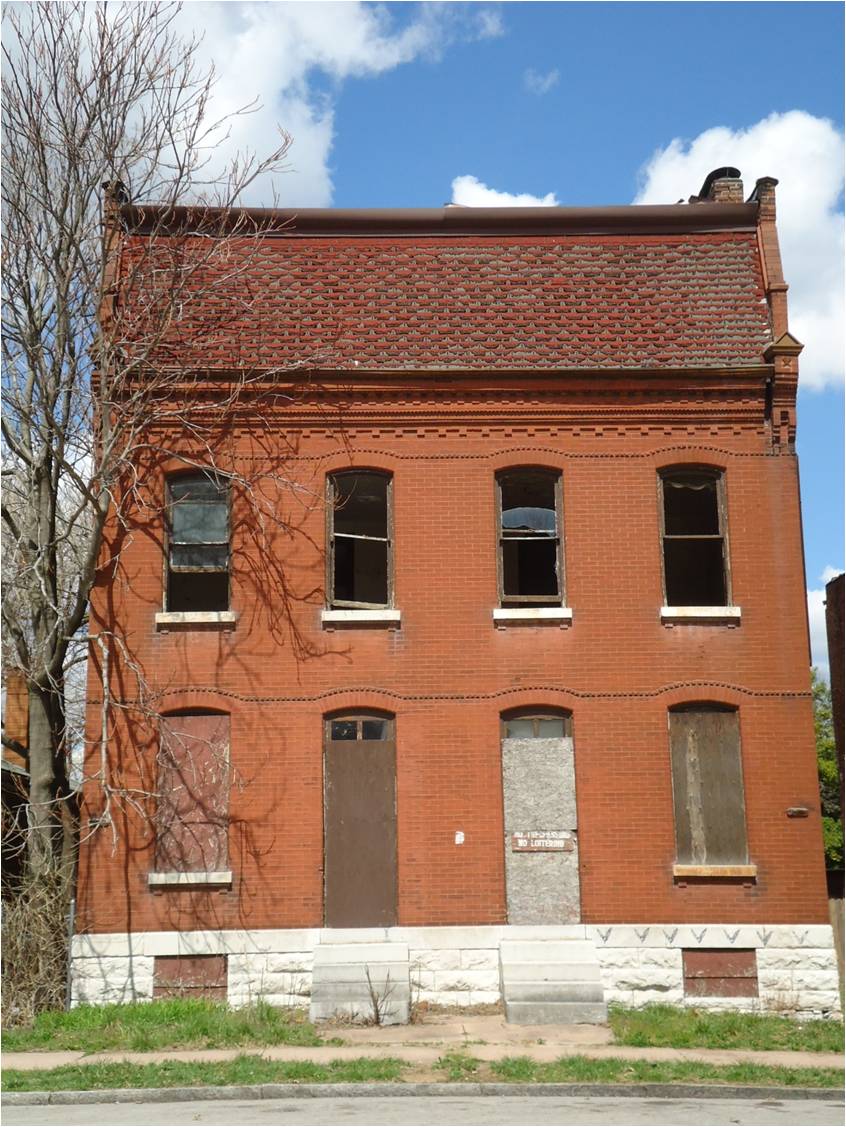 |
The three-story, four-family building at 2829 Magnolia was built in 1892 and had been vacant for over 20 years when DeSales Community Housing Corporation acquired it from the Land Reutilization Authority in December 2014. Long-term water infiltration had collapsed much of the interior structure, resulting in the need to replace about half of the floor joists and rebuild the rear wall. After rehab had begun, a heavy rainstorm caused a substantial portion of the brick and terra cotta cornice to fall into the front yard, but the project remained on track. Our historic neighborhoods are salted with buildings such as this. Properties that are critical to the historic fabric, but that have been passed over by initial waves of rehabilitation because of their severely deteriorated condition. Fortunately, non-profit developers like DeSales exist in part to take on the challenges that others will simply avoid.
While the rehabilitation of this individual building demonstrates DeSales' extraordinary dedication to revitalizing historic architecture, it is only a fraction of a much larger 36-unit development Called DeSales Impact. This effort combines the rehabilitation of two long-vacant buildings with construction of nine new homes in accordance with local historic district standards, to help restore the architectural fabric in depleted portions of three historic districts. Increasingly we are seeing such scattered site, multi-unit efforts being targeted at problem blocks and areas where historic fabric is incomplete. Such efforts on behalf of community development corporations like DeSales are making enormous strides restoring density while actively pursuing economic diversity in revitalizing neighborhoods. Congratulations on a job well done. The project architect was Heine-Croghan and E.M. Harris was the contractor.
 |
Eagle Bank
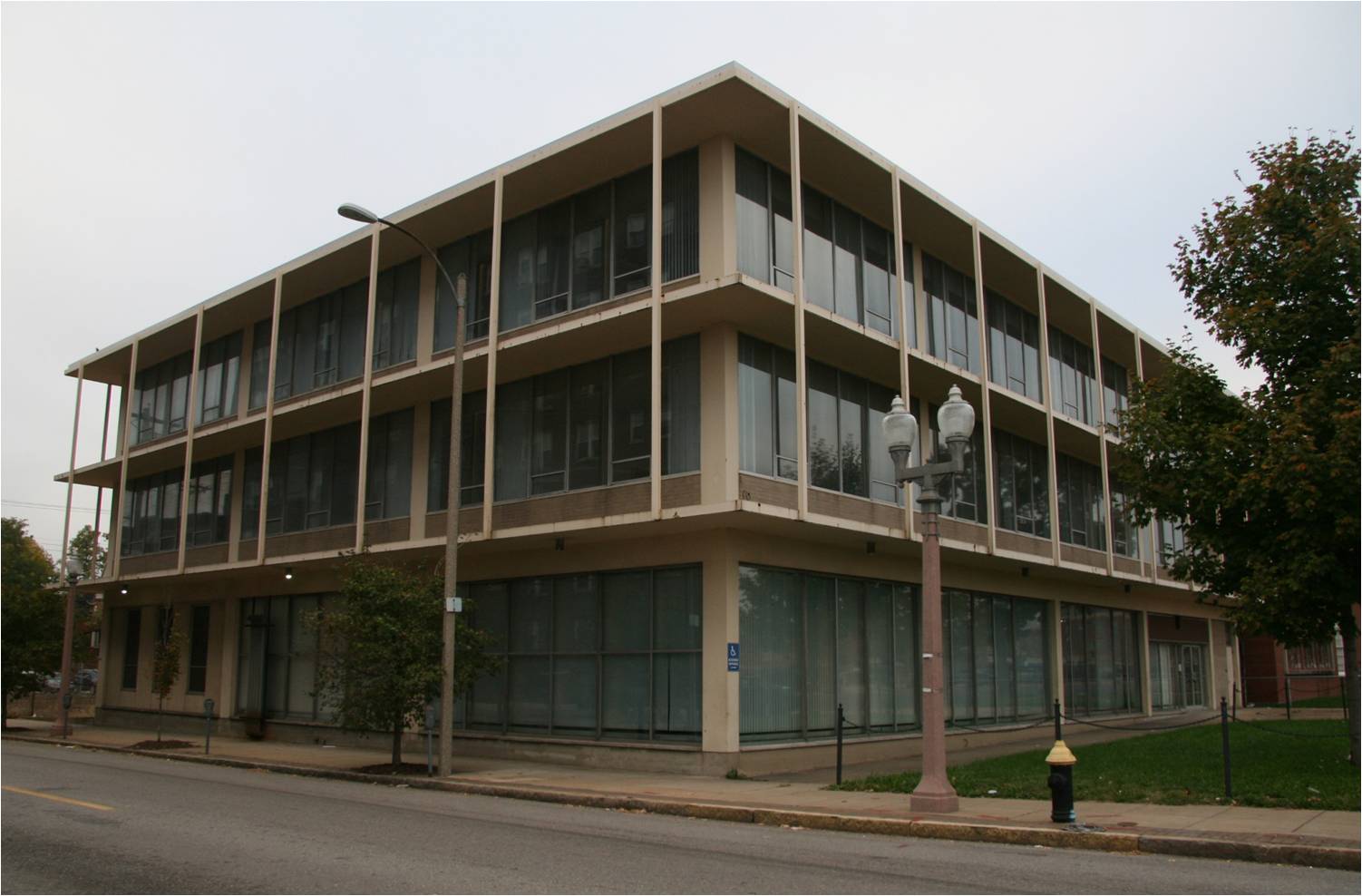 |
Situated at the southwest corner of Lindell Boulevard and N. Sarah Street, this building was originally constructed for the Remington Rand Corporation in 1957. The building represents an early local example of the Midcentury Modern Movement in St. Louis by the prominent international architectural firm of HOK. It is believed to be one of the first buildings ever designed by Gyo Obata upon inception of the firm. The building was recently recognized by the St. Louis Cultural Resources Office as one of the most important buildings (out of 2,300 resources) that were recorded by a comprehensive survey of midcentury architecture in the city. The effort to inventory and recognize the city's mid-century buildings was precipitated by recent and ongoing threats to such resources in the central corridor as evidenced by the demolition of the DeVille Motor Hotel for a parking lot and an effort to demolish the AAA building on Lindell for a CVS in recent memory. The decision to adapt rather than replace this building therefore represents what we hope is a shifting attitude toward valuing the diversity of our architectural heritage and to protecting some of our newest historic buildings for future generations.
The building went vacant in 2009 after the St. Louis Housing Authority relocated its headquarters. Completed in November 2015, it was converted into approximately 6,000 SF commercial office space and 16 market rate apartments on the 2nd and 3rd floors. All architectural and interior design features were selected to reflect the building's original Midcentury Modern style. The building is currently occupied by an Eagle Bank and Apex Network Physical Therapy branch office. Leasing for the 16 market rate residential apartments units is ongoing.
Lawrence Group provided development, architecture, interior design, and construction services for this project.
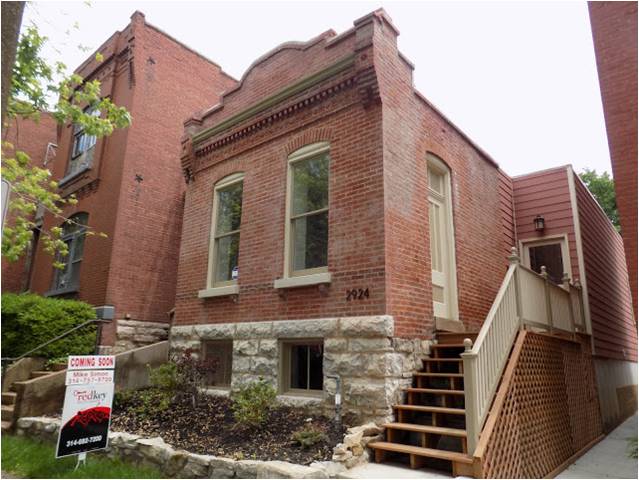 |
2924 McNair
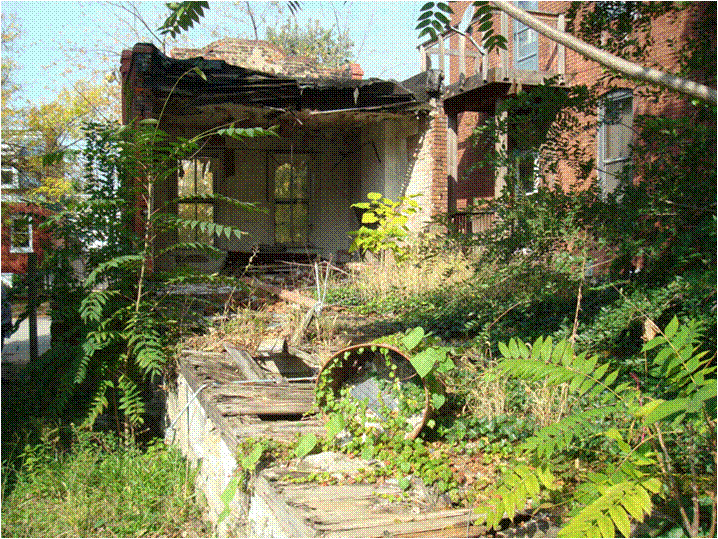 |
While working on the script for tonight, I noticed that Alex Ihnen of Nextstl.com had just published a short article on this project. In it he noted that we had recognized it as a Most Enhanced Award Winner. He suggested that it would be better suited for a "Holy Shit You Did What"? award. I will be submitting the name change to our board for consideration at our June meeting.
This unusual project involved both the restoration of a historic building and the addition of essentially an entirely new house. Historic Sanborn maps show that this shotgun home was originally constructed with a front room of brick with a frame rear portion. The frame section had burned and was torn down during the course of an aborted previous attempt at redevelopment that left the rear wall of the property open to the elements for a decade and the building abandoned to the city for back taxes. For years the Benton Park Community Housing Corporation and Alderman Ortmann kept the wrecking ball at bay while shopping the home to a veritable clown car of potential developers. Finally, a vision for the building arrived with Tim Kane and Carolyn Simon. Using the building's original footprint as a guide, a redevelopment was planned that included the rehabilitation of the original front room with a newly reconstructed rear portion. This allowed the original block face to remain intact while creating a product that would be marketable. In order to qualify for historic rehabilitation tax credits, the new portion of the home couldn't overwhelm the original section, which meant that instead of building a second story, the addition would have to have a finished basement. From an 800 square foot shell, a 3,000 square foot home was grown including three bedrooms, three full bathrooms and thoroughly modern amenities. This project is a great example of how not to give up on a building and also demonstrates the viability of the "Facadectomy" approach which, when appropriate, can allow the appearance and rhythm of a historic streetwall to remain intact even when all of its buildings are not. It is also a fantastic example of how historic rehab development can rebuild our city's tax base. Considering the home last sold for $300 and is currently listed for nearly $400,000, you would think that city leaders might consider reallocating some of their demolition budget for stabilization. The architect was Edin Coralic and the contractor was Tim Kane.
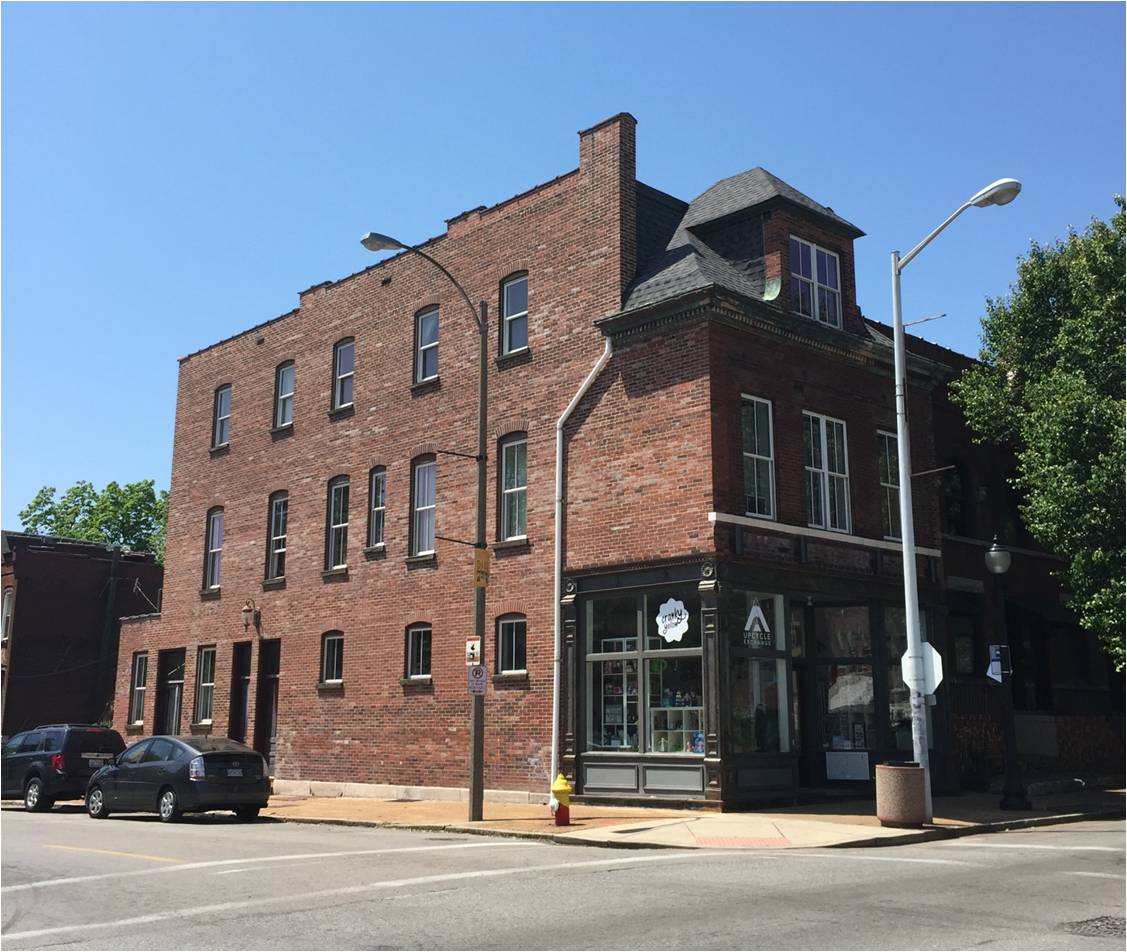 |
2900 Cherokee
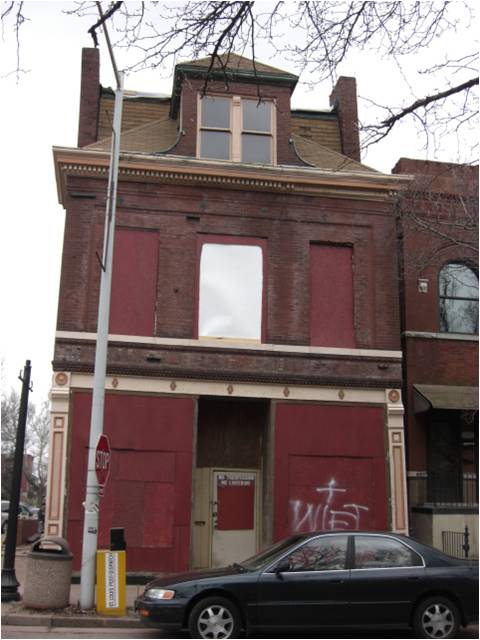 |
Vacant for close to twenty years, Will Liebermann knew this prominent commercial/residential building at the corner of Cherokee and Nebraska was in bad shape when he bought it, but as so often happens, it wasn't until rehab began that its truly dire state was revealed. While so much of Cherokee has been coming back to life in recent years, the condition of this building made it one of the most challenging projects yet undertaken along the length of the street. But the three story building with its intact cast iron storefront wrapping the corner was an irreplaceable anchor. It simply had to be a part of Cherokee's next chapter. But first, it had to stop threatening to kill people. When construction began, portions of the east wall were bowing out more than 30 inches above a public sidewalk-a condition that if left unchecked for much longer could have led to an emergency demolition. In addition, the entire south wall had to be reconstructed due to related structural problems. On the interior, little more than some flooring and a set of pocket doors could be salvaged. But the building's exterior had great character and after the engineers had figured out what was needed to keep it standing, architect Paul Dehart and historic consultant Melinda Stewart planned four new apartments and the restoration of the commercial space. Once again sound, beautiful and occupied, this building no longer menaces pedestrians or intimidates developers, and the question of whether it will stick around to be a part of Cherokee's future has been answered. The Developer was WJL Properties, Paul DeHart was the architect, Contractor was A.G. Contracting.
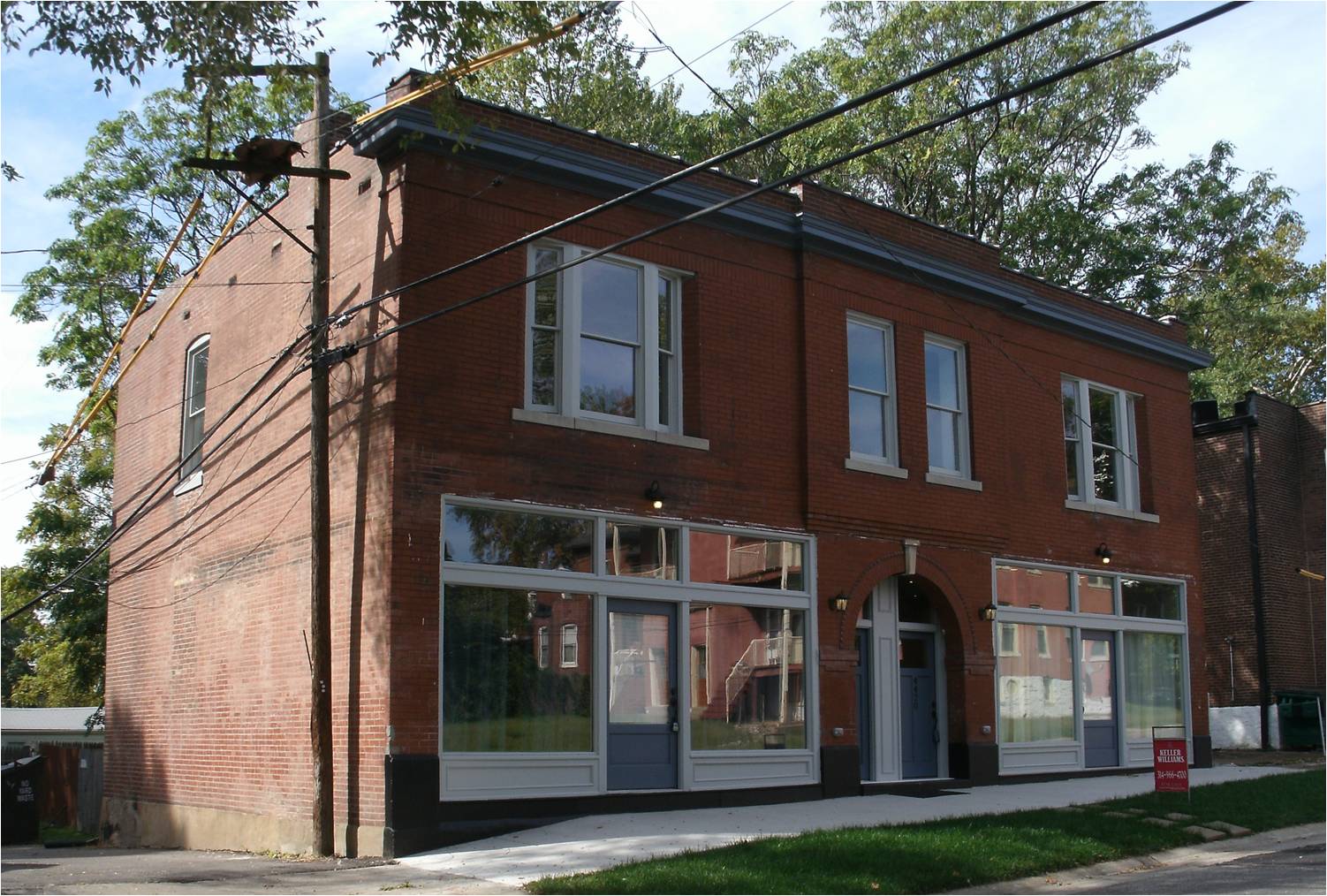 |
4418 Connecticut
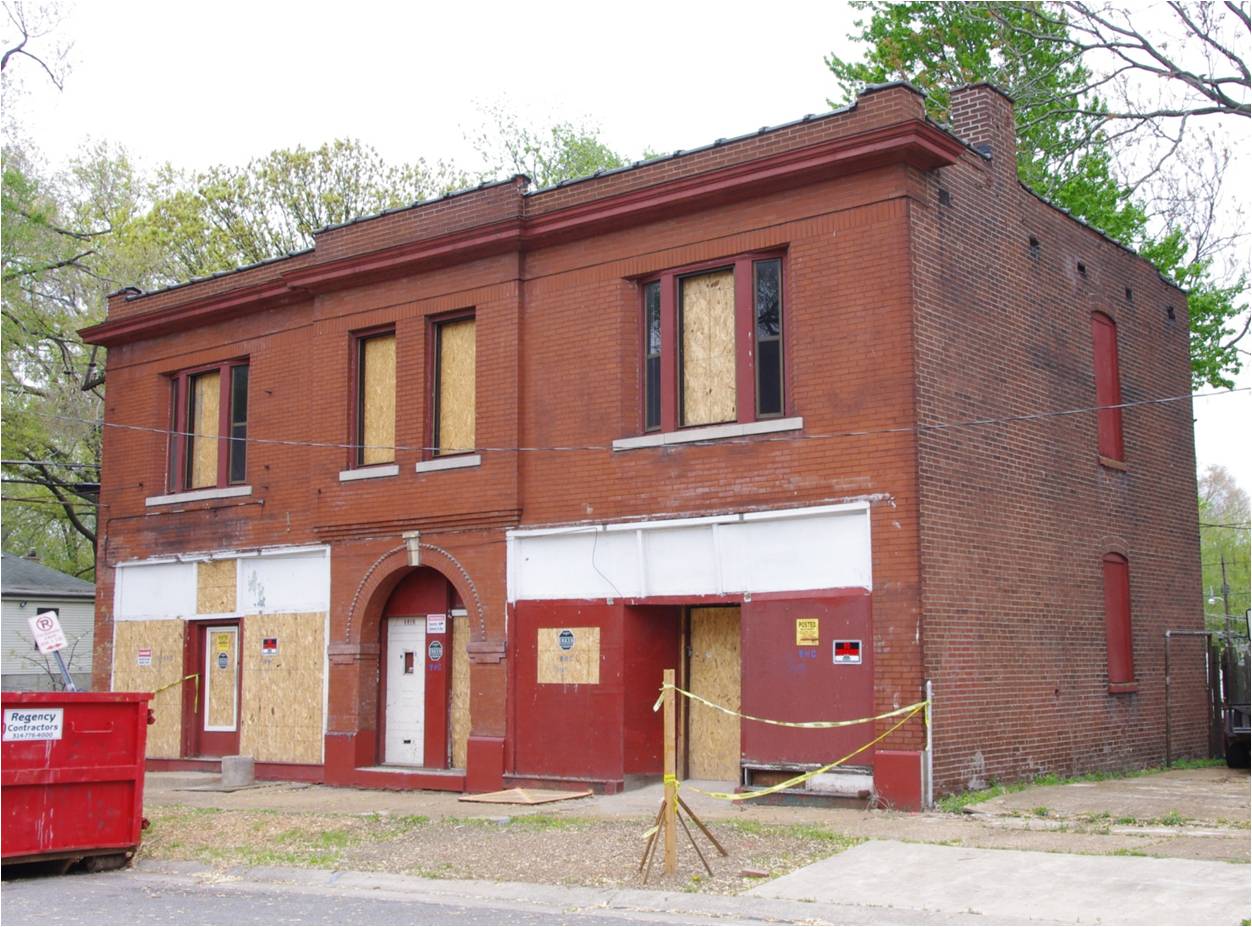 |
From the beginning, the rehabilitation of 4418 Connecticut was complex. At least one previous developer hoped to rehab this building around 2008, but abandoned his project after gutting the interior leaving the building unstable without interior walls and holes in the floors. In addition, there was no demand for commercial space in the middle of this residential neighborhood west of the Morganford business district, but development as residential space was a challenge because the building is literally built on the property line. This meant no yard space, off-street parking, or even code compliant rear stairs, which would have to step down across the property line. To address these challenges, the developers decided to create two residential units that each incorporated a storefront and to mitigate the absence of exterior space with alternative amenities such as a rooftop deck for each unit. The building's interior essentially had to be rebuilt and its structure stabilized. A new roof/decking and gutter system were built, new historic replica wooden windows installed, and the storefronts restored to the original configuration which was deduced from the position of the sill plates and other physical evidence. Nearby neighbors were very excited to see this building finally being renovated in part because the previous owner had left a construction waste dumpster abandoned on the street taking up room and advertising the vacant condition of the building to any drug dealers that were paying attention. Despite the obvious activity at the site, the johnny on the spot had to be padlocked at the outset to keep the building's former patrons from using it to conceal their habits. Fortunately those problems were short lived and both units were sold before construction was complete. Now that the building is finished and the homes occupied, the project has improved the quality of life for its neighbors, not to mention the overall appearance of the neighborhood. Jennifer and Jon Maness and Mickey Ribaudo served as developer and contractor, the architect was AD Arch.
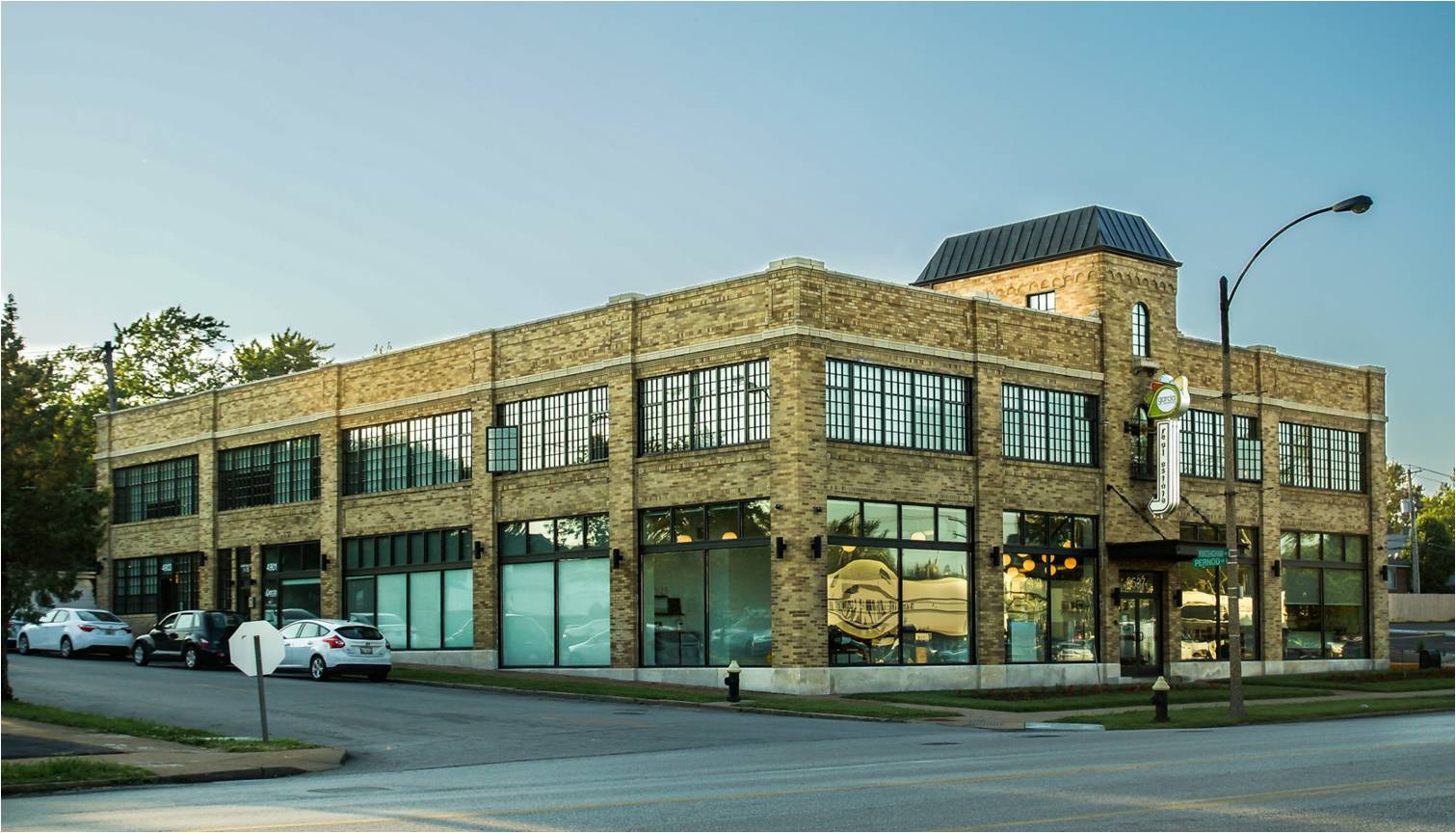 |
Garcia Properties, 3537 S. Kingshighway
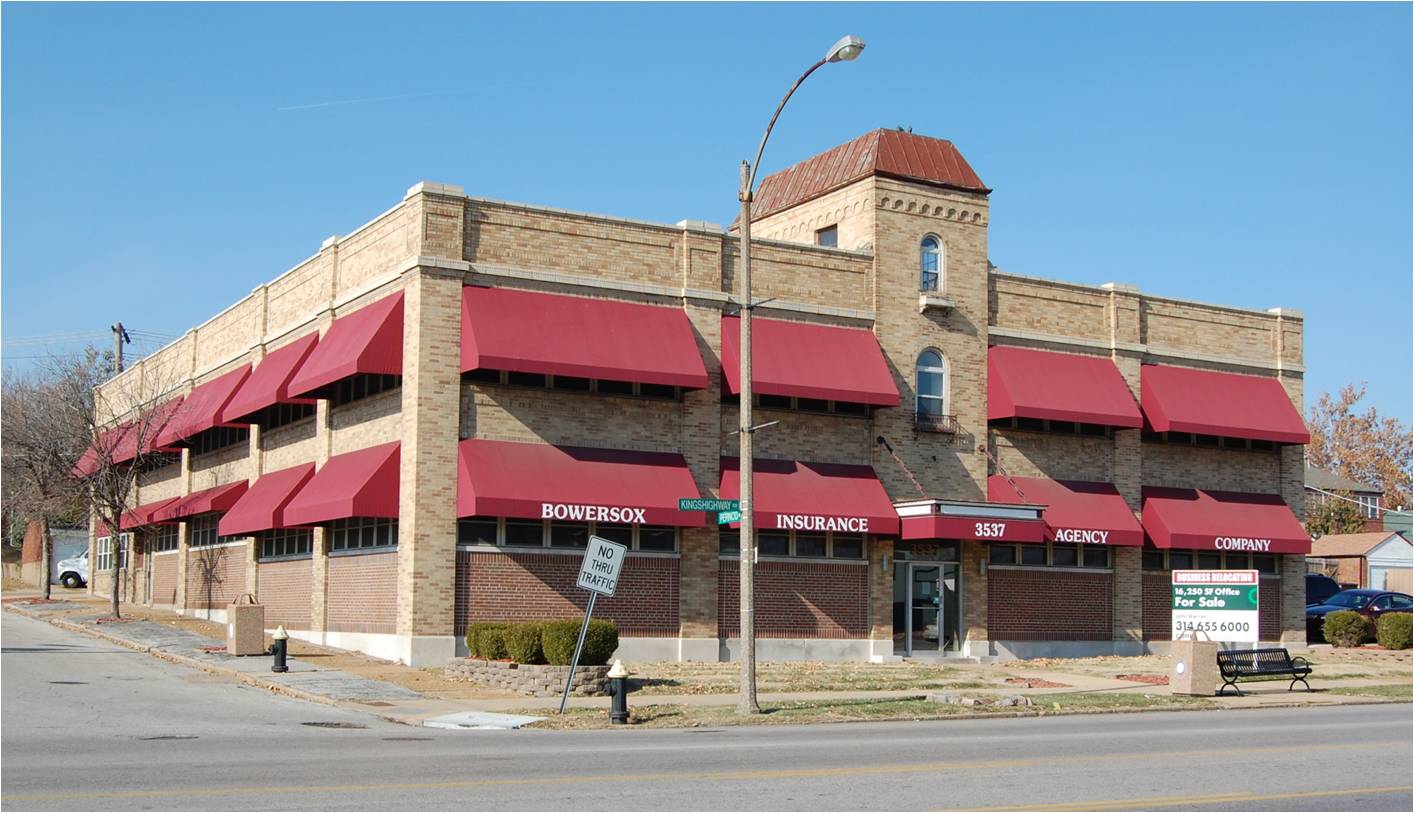 |
Constructed by the Brahm-Mitchellette Motor Car Company in 1927 as an Oakland-Pontiac showroom, this stately mission revival building is representative of a transitional time in St. Louis' auto industry. While the city's original Automotive Row was centered around Locust street on the western side of downtown, by the 1920s car dealers had begun to move to south Kingshighway where space was abundant, streetcars non-existent and middle class neighborhoods were developing rapidly. However, unlike the car lots that became the norm after World War II, the Brahm-Mitchellette company built a substantial and attractive building whose quality would be a fitting showcase for the prestigious autos it housed. Used as a car dealership until 1944, ten years later the building was taken over by the Bowersox Insurance company which remained until 2014. Over the course of their 60 year tenure, the building was adapted for office use. Large interior showroom spaces were partitioned off, high ceilings were dropped and the huge showroom windows were partially bricked in and then further obscured by awnings. By the time Garcia Properties started looking for a new home for their growing business, the building had become easy to overlook. Of course, for anyone who slowed down long enough to ponder it, the building's potential was obvious.
As other older car dealerships along Kingshighway fell to convenience stores and big boxes, the Garcias new that this building could provide a signature home for their company and allow the family business to consolidate operations under one roof. Interior spaces were restored to their historic dimensions before again being re-tooled for modern office use. The original show room window bays were re-opened and fitted with replica steel-sash industrial windows and the upper story configured into apartments that make maximum use of the abundant natural light that once made the show rooms glow.
Congratulations to the Garcias and everyone involved in this project, including Landmarks' Ruth Keenoy who authored the National Register nomination. Garcia Development was the contractor, UIC/CDO was the architect.
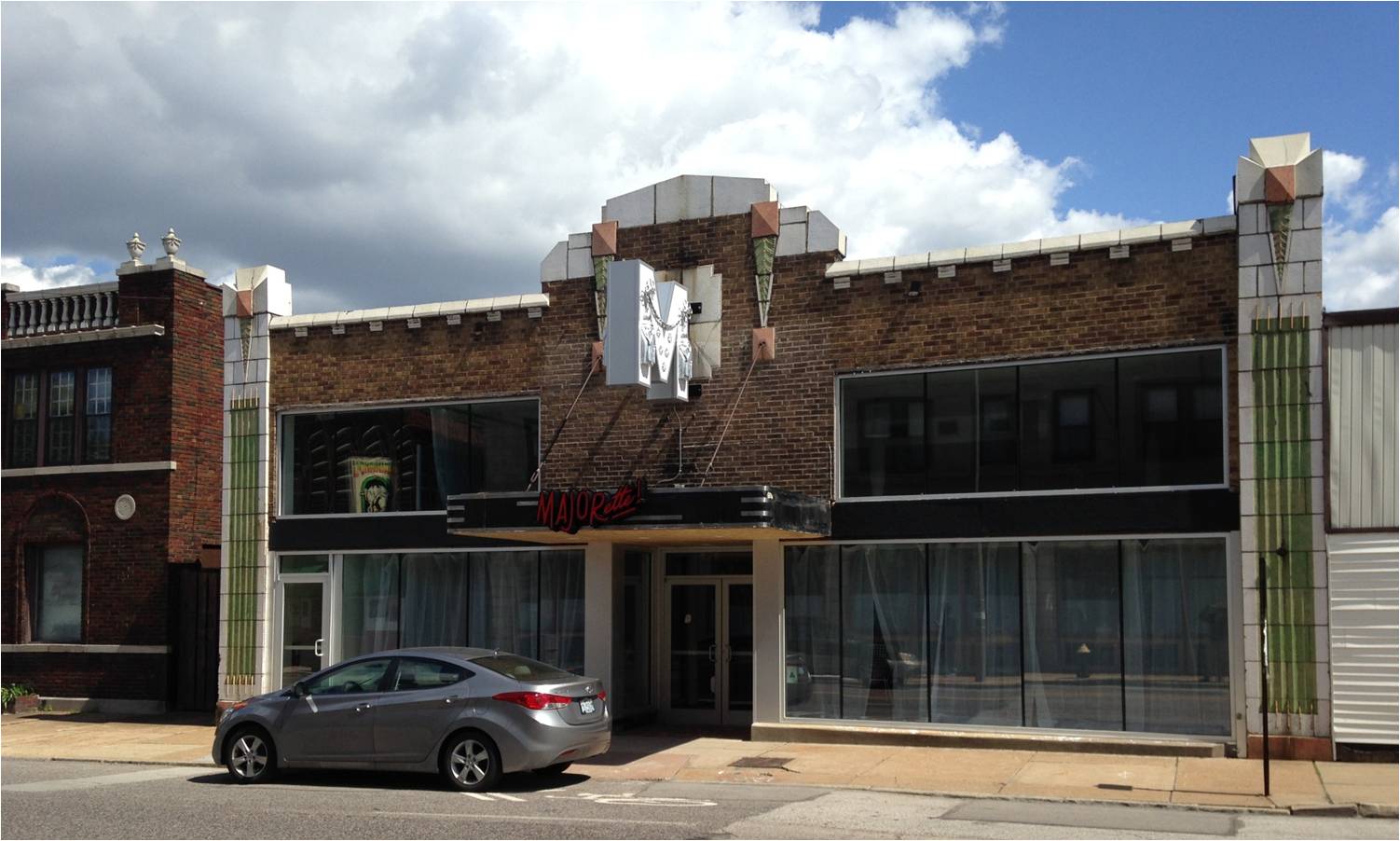 |
Majorette, 7150 Manchester
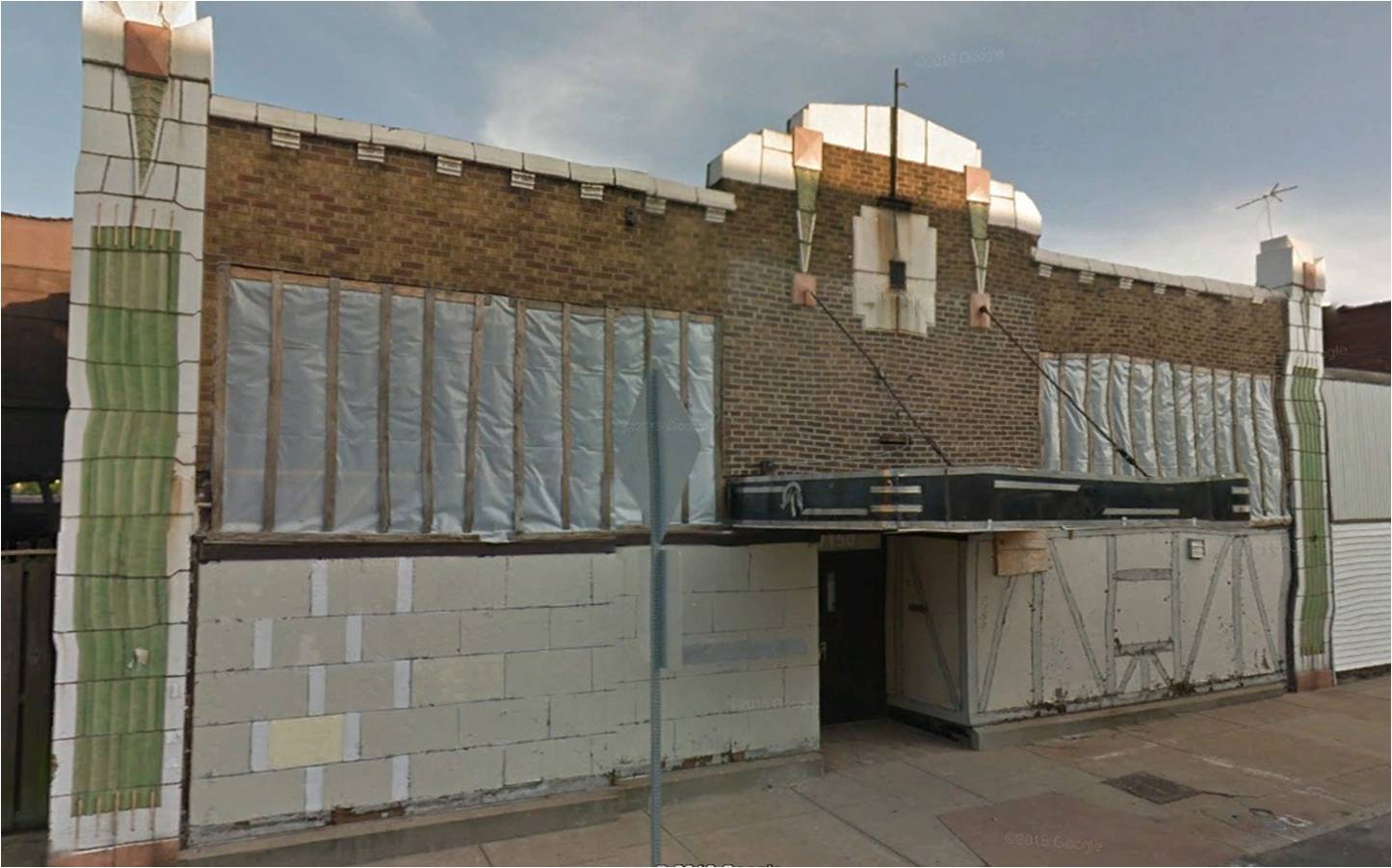 |
The building that hosted the awards ceremony was constructed as a suburban branch of the Union House Furnishing Company around 1929. By 1931, the company had a central location downtown as well as two suburban branches at the southern and northern fringes of the city here on Manchester and on Bartmer Avenue near the U. City Loop. In 1937 the building was taken over by the Schenk Furniture Company, which went out of business sometime around 1983. At that point, the building was converted into a 20th century incarnation of a Dickensian work house call center hellscape where dreams came to die. Later, the building sat vacant for six years until Patrick and Carol Schuchard stepped in. Coming off the success of their renovation of the Artists Guild on North Union, the Schuchards were looking for a new historic space to repurpose as an event venue. Like so many other award winners, the Schuchards are undiagnosed serial rehabbers who move from building to building leaving a trail of gleaming renovations and economic vitality in their wake. When they acquired the building, the storefront had been blinded by an inexplicable faux tudor growth. In addition, there had recently been about a foot of water in the basement and there were horrible mold problems. Of course these problems were exacerbated by all of the sodden acoustical tile, plaster, carpet, cubicles and motivational posters that had once encouraged the former inmates to "make the sale!" Despite these issues, the Schuchards saw the potential in the room's mezzanine's and they set to work opening up and cleaning out what had once been an airy showroom. The decision to add a massive clerestory above the staircase at the rear of the building was a game changer that allowed natural light to flood into the space. After 10 months of work the building is once again contributing to the vitality of this important portion of Manchester where the historic urban fabric remains intact. Majorette Events
